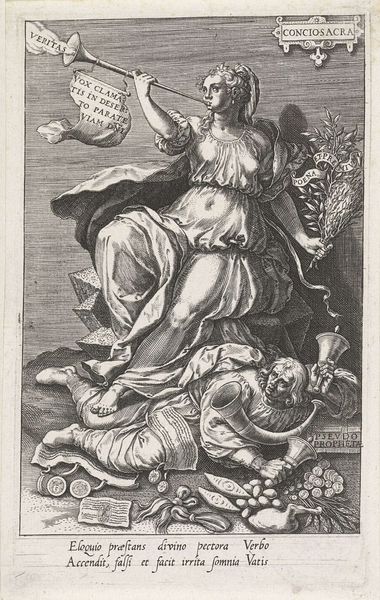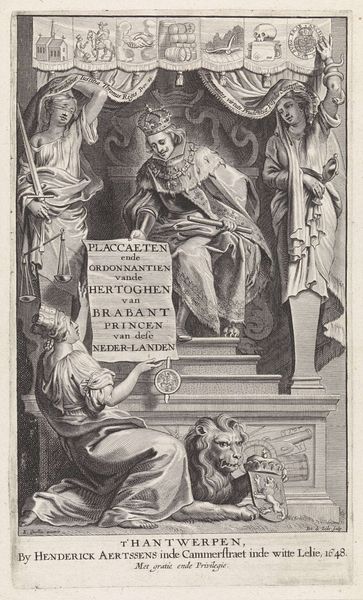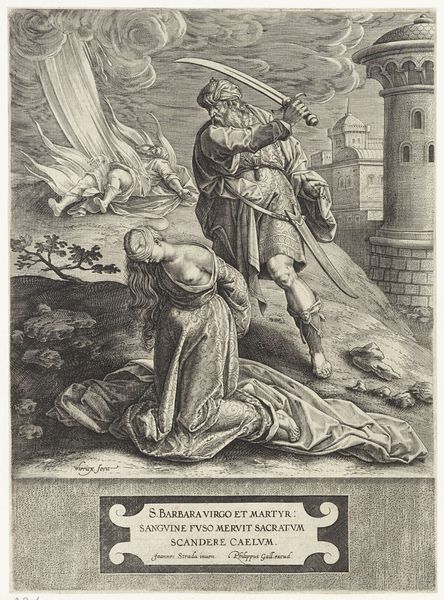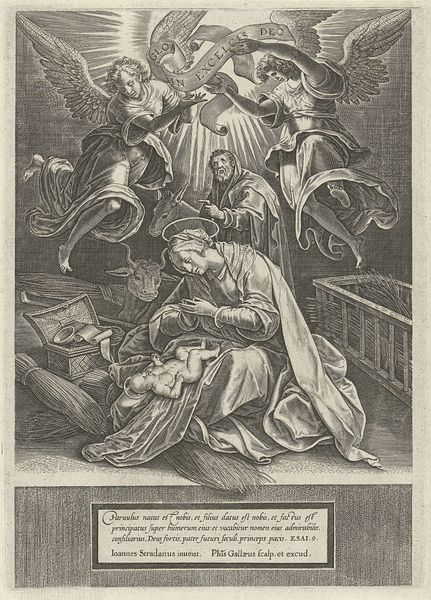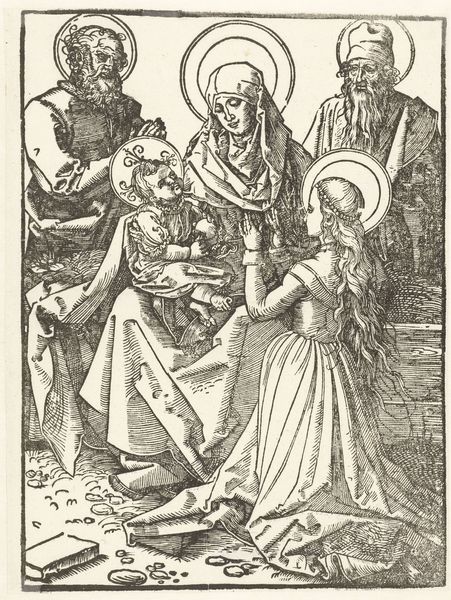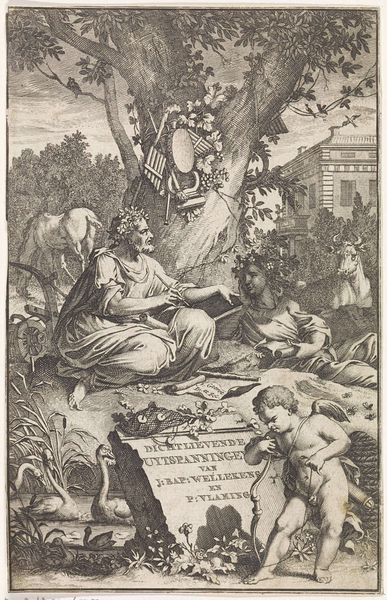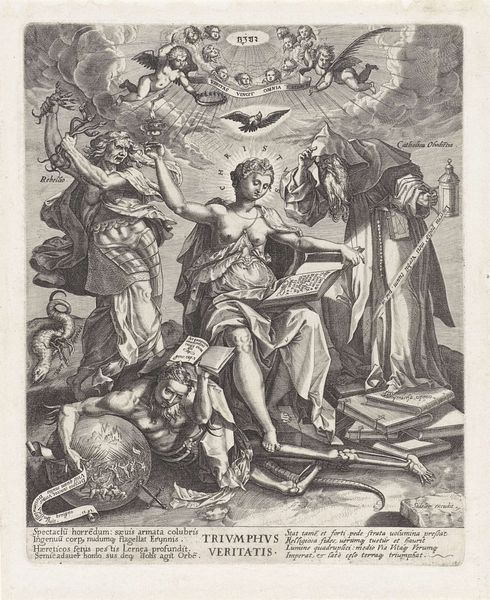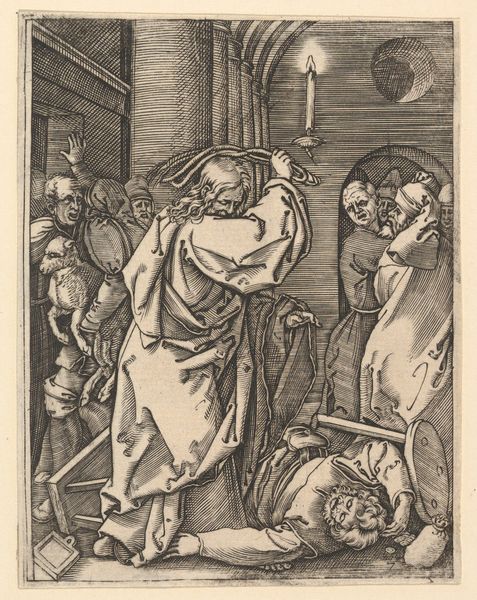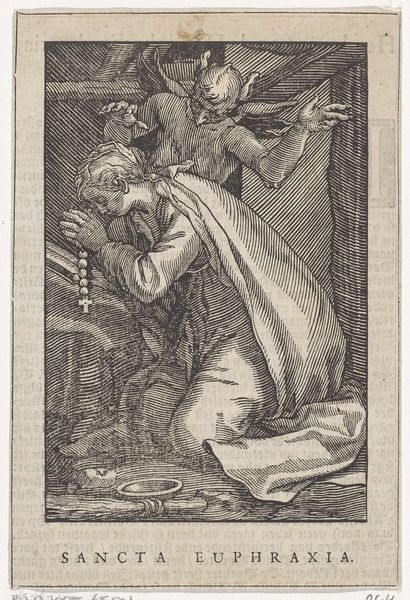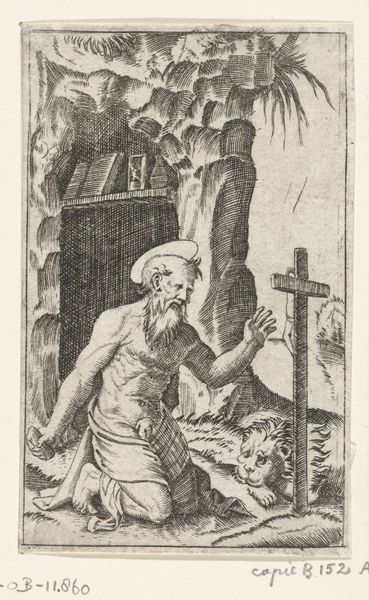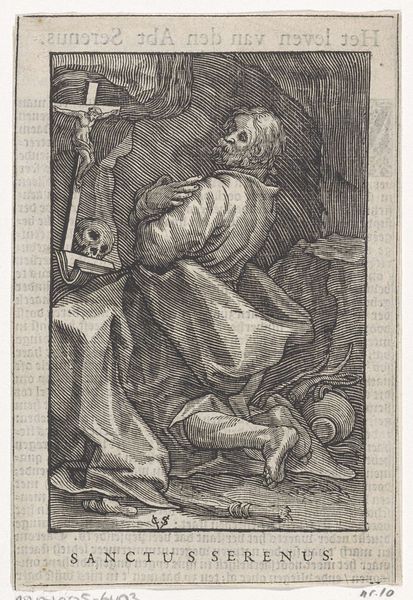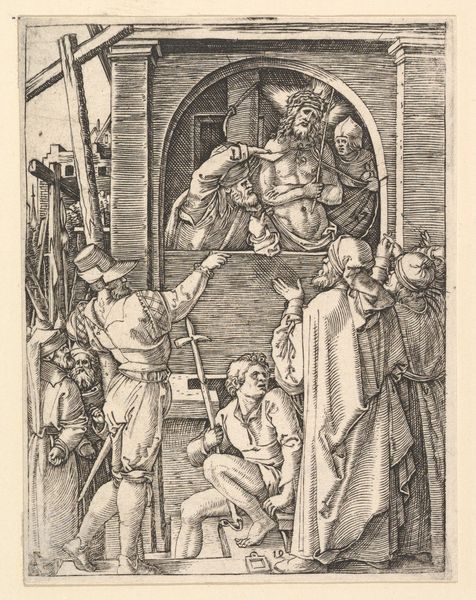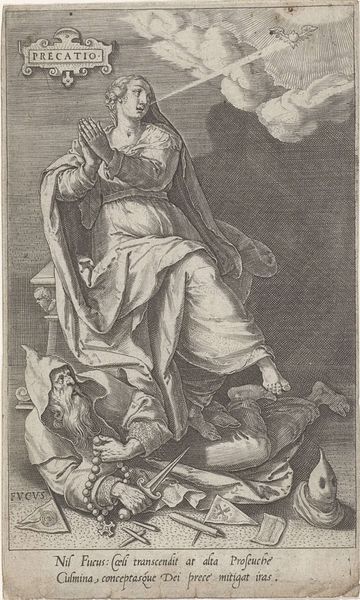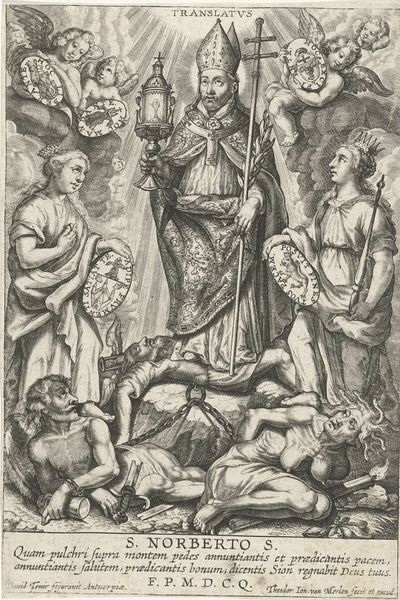
Christelijke Religie (Religio Christiana) overwint Afgoderij (Idolatria) 1579
0:00
0:00
Dimensions: height 143 mm, width 89 mm
Copyright: Rijks Museum: Open Domain
Curator: Here we have a 1579 engraving by Johann Sadeler I, currently held at the Rijksmuseum, titled "Christelijke Religie (Religio Christiana) overwint Afgoderij (Idolatria)" – "Christian Religion (Religio Christiana) Overcoming Idolatry (Idolatria)". It’s quite an intricate allegory, wouldn't you say? Editor: Intricate is an understatement! My initial reaction is a strange mix of triumph and discomfort. It's…didactic, visually very Baroque, what with all the symbolic figures jammed together in a rather hierarchical manner. I find my eyes darting around trying to unpack it. Curator: The composition is deliberately ordered. We see Religio Christiana centrally enthroned. A powerful female figure stepping on a defeated king that lies next to a sacrificial animal, implying the triumph of Christianity over pagan idolatry. Note the tablet in her hand, the dove overhead, the sun. These are strong visual markers. Editor: Ah, yes, she is practically dripping in established symbolism: the book signifying scripture, the lamb indicating sacrifice, she is all clarity while “Idolatria” gets crushed in the dirt, holding onto a broken scepter like a toddler throwing a tantrum. It all speaks of very definite power dynamics and established order of the time. I find myself wondering about how this particular allegory might have worked at the time for its audiences? Curator: It reinforces the cultural memory of Christianity’s ascendance. Consider the turbulent 16th century and the Reformation: religious identity was deeply contested. Prints like these were tools of visual rhetoric. And Sadeler uses familiar allegorical tropes to express a specific claim: Christianity is the true religion, it brings forth truth, clarity, light. Everything associated to "idolatry", is by contrast dark, primitive, almost animalistic. Editor: Right! And you see it visually reinforced with that light/darkness contrast through the work; almost propaganda. The symbolic weight it conveys feels, dare I say, almost too… literal? Do we, as viewers in a different era, bring our own idolatries, however? Perhaps a faith in science or technology, now needing examination in relation to old religious beliefs? Curator: That's the enduring question with any symbolic language, is it not? We read it through our own cultural filters, projecting our own experiences and anxieties onto the original intent. This work embodies the historical certainties that informed its moment, a time very different from ours, but visual rhetoric as propaganda keeps holding force to date, even in today´s world of AI creations and machine vision! Editor: True! In some ways, seeing this so clearly articulated visually serves as a sort of case study in visual and symbolic meaning-making and it all just underscores how meaning evolves through time. Thanks for showing me a fresh way to think about how these images affect how our own brains are being subtly shaped!
Comments
No comments
Be the first to comment and join the conversation on the ultimate creative platform.
